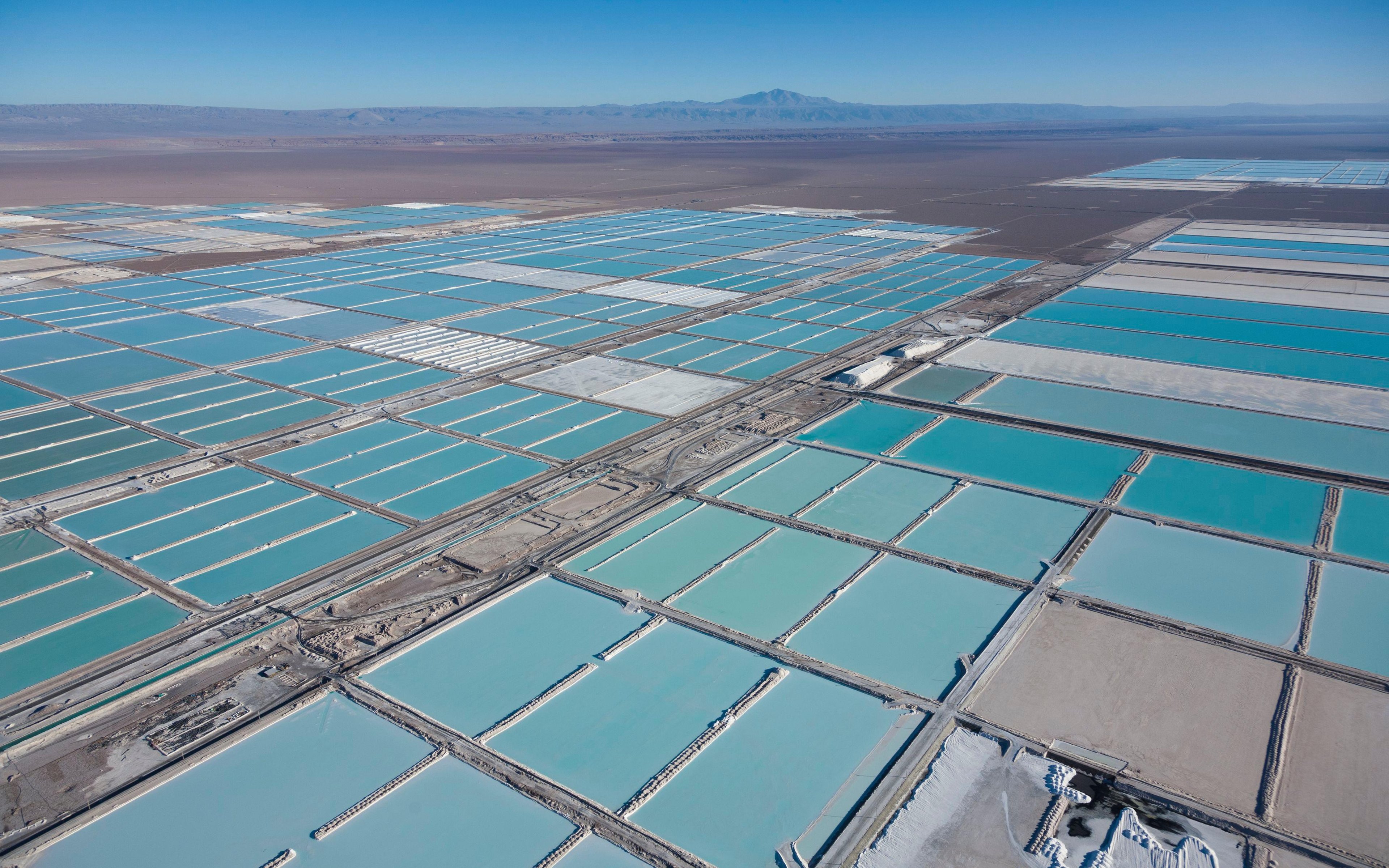TSMC’s odds of future success have increased. Here is why it belongs in a portfolio of the world's most exceptional companies.
.

Photo by RITCHIE B TONGO/EPA-EFE/Shutterstock
Investors should carefully consider the objectives, risks, charges and expenses of the Fund before investing. This information and other information about the Fund can be found in the prospectus and summary prospectus. For a prospectus or summary prospectus please visit our website at https://usmutualfund.bailliegifford.com. Please carefully read the Fund’s prospectus and related documents before investing. Securities are offered through Baillie Gifford Funds Services LLC, an affiliate of Baillie Gifford Overseas Limited and a member of FINRA.
“The best time to plant a tree was 20 years ago. The second-best time is now,” so goes an old Chinese proverb.
For the investor, this can be a challenging mentality to adopt. Particularly in the Long Term Global Growth Fund, which looks to exploit the asymmetry of stock market returns. Recall that only a small number of holdings will contribute meaningfully to portfolio returns over time, so our ability to find and hold those few outliers is hugely consequential. As such, the most significant risk we face is that of missed growth.
This happens of course. Sins of omission like Nike, and Starbucks, or insufficient patience with previously held companies Apple and Microsoft have been far more valuable lessons for refining our philosophy and process than the sins of commission such as Beyond Meat, Vestas, or Ginkgo Bioworks.
The challenge we face is that once a company’s share price has quintupled (the return hurdle for inclusion in LTGG portfolios), the odds of it doing so again are significantly reduced. In other words, investing early in outliers matters. Examples such as Amazon, Tesla and NVIDIA come to mind.
That said, the odds of an outlier quintupling again are not zero. Indeed, the best might yet be to come.
Precedents here include Netflix, which had already increased five-fold in the four years prior to our initial purchase in 2015. Since then, however, it has generated a holding period return of approximately 15 times. Similarly, when we first purchased ASML in 2017, we berated ourselves for being decades late to the opportunity (it had delivered a share price return of approximately seven times since the inception of the LTGG strategy in 2004). However, since our ‘late’ purchase, it has delivered a further five to six times return at time of writing.
This leads us to our newest purchase for the portfolio: Taiwan Semiconductor Manufacturing Company (TSMC). So, what is it about this nearly 40-year-old company that informs our conviction that there is still plenty of potential upside from here?
Hidden among the lush and green streets of Hsinchu Science Park, on Taiwan’s west coast, TSMC has built one of the world’s most important factories. The area is now often referred to as Taiwan’s Silicon Valley, as this tech-focused microcosm has prevailed as the centre of the semiconductor industry, which is so crucial to global supply chains.
Semiconductors are everywhere, from mobile phones and laptops to washing machines and cars. The demand for these tiny yet extremely powerful components has been mounting as physical assets continue to digitise to become smarter and as our appetite for artificial intelligence grows.
TSMC’s impenetrable competitive advantage in a secular growth opportunity is apparent merely by virtue of it commanding 90 per cent of the production of the most advanced semiconductors. It is a key supplier to behemoths like NVIDIA and Apple.
But such characteristics of the company have existed for decades, so why are we investing now?
Firstly, TSMC is a pure foundry, meaning it does not design its own semiconductors but instead focuses on manufacturing those of its customers, at unmatched efficiency. As a result, TSMC benefits from being agnostic to the source of semiconductor demand. This is particularly attractive at a time when it is not yet clear where the dust will settle on the AI arms race.
Secondly, the company’s domicile means geopolitical risks are a key area of concern for the market. However, the work we have done with external experts has helped us form a view on what probabilities we should attach to various scenarios. It is also encouraging to see the company commit to diversifying its geographic footprint – it has recently announced it will allocate $100bn toward building five new US factories in coming years. Successfully replicating its manufacturing prowess overseas could be game-changing, both in terms of unlocking higher volumes and derisking our investment case.
Thirdly, while TSMC is new to the LTGG portfolio, it has been held in other Baillie Gifford portfolios since 1999. 26 years of ownership and over 100 pieces of internal research have afforded us in the LTGG team the opportunity to get to know this company deeply over the years. This has made it simpler for us to build our conviction in possible upside scenarios.
Lastly, while TSMC is undeniably a cyclical stock, there is an often underappreciated countercyclical appeal. Its total assets have increased every year since 2009, despite the inherent cyclicality of the industry in which it operates. All the while, it remains committed to research and development and capital expenditure. Together these comprise 40 percent of sales, as the company continues to reinvest in its future growth through the cycles.
So, what could an upside scenario look like? We think it’s possible that AI presents a structural tailwind for chip demand, whereby the semiconductor market grows 15 per cent per annum to account for approximately 1.5 per cent of global GDP by 2035 (for context, the oil industry accounts for around 4 per cent today). This tailwind, coupled with TSMC’s lead in advanced packaging and constant innovation, at a high-teens market multiple, could translate into a quintupling of TSMC’s market capitalisation from the time of initial purchase to approximately $4tn by 2035.
Our task remains that of sowing the seeds of future growth and ergo returns. TSMC is an exceptional company and while it has already delivered outlier returns, we believe its odds of future success have increased.
The Baillie Gifford Long Term Global Growth Fund
(Share Class K) as of March 31, 2025
| Gross Expense Ratio | 0.71% |
| Net Expense Ratio | 0.71% |
Annualised total return as of March 31, 2025 (%)
| 1 year | 3 years | 5 years | 10 years | |
|
The Baillie Gifford Long Term Global Growth Fund |
7.69 | 3.73 | 13.16 | 14.24 |
|
MSCI ACWI Index |
7.63 | 7.42 | 15.70 | 9.38 |
Source: Bank of New York Mellon and relevant underlying index provider(s). Net of fees, US dollars.
The performance data quoted represents past performance and is no guarantee of future results. Investment return and principal value of an investment will fluctuate so that an investor’s shares, when redeemed, may be worth more or less than their original cost. Current performance may be lower or higher than the performance data quoted. For the most recent month-end performance please visit our website at www.bailliegifford.com/funds/baillie-gifford-long-term-global-growth-fund/
Returns are based on the K share class from 28 April 2017. Prior to that date returns are calculated based on the oldest share class of the Fund adjusted to reflect the K share class fees where these fees are higher.
The Baillie Gifford fund’s performance shown assumes the reinvestment of dividend and capital gain distributions and is net of management fees and expenses. Returns for periods less than one year are not annualised. From time to time, certain fees and/or expenses have been voluntarily or contractually waived or reimbursed, which has resulted in higher returns. Without these waivers or reimbursements, the returns would have been lower. Voluntary waivers or reimbursements may be applied or discontinued at any time without notice. Only the Board of Trustees may modify or terminate contractual fee waivers or expense reimbursements. Fees and expenses apply to a continued investment in the funds. All fees are described in each fund’s current prospectus.
Expense Ratios: All mutual funds have expense ratios which represent what shareholders pay for operating expenses and management fees. Expense ratios are expressed as an annualized percentage of a fund’s average net assets paid out in expenses. Expense ratio information is as of the fund’s current prospectus, as revised and supplemented from time to time.
The MSCI All Country World Index is a free float-adjusted market capitalization weighted index that is designed to measure equity market performance in the global developed and emerging markets, excluding the United States. This unmanaged index does not reflect fees and expenses and is not available for direct investment.
Legal Notices
Source: MSCI. MSCI makes no express or implied warranties or representations and shall have no liability whatsoever with respect to any MSCI data contained herein. The MSCI data may not be further redistributed or used as a basis for other indexes or any securities or financial products. This report is not approved, endorsed, reviewed or produced by MSCI. None of the MSCI data is intended to constitute investment advice or a recommendation to make (or refrain from making) any kind of investment decision and may not be relied on as such.
RISK FACTORS
This content contains information on investments which does not constitute independent research. Accordingly, it is not subject to the protections afforded to independent research and Baillie Gifford and its staff may have dealt in the investments concerned.
As with all mutual funds, the value of an investment in the fund could decline, so you could lose money.
The most significant risks of an investment in the Baillie Gifford Long Term Global Growth Fund are Investment Style Risk, Growth Stock Risk, Long-Term Investment Strategy Risk, Non-Diversification Risk and Non-U.S. Investment Risk. The Fund is managed on a bottom up basis and stock selection is likely to be the main driver of investment returns. Returns are unlikely to track the movements of the benchmark. The prices of growth stocks can be based largely on expectations of future earnings and can decline significantly in reaction to negative news. The Fund is managed on a long-term outlook, meaning that the Fund managers look for investments that they think will make returns over a number of years, rather than over shorter time periods. The Fund may have a smaller number of holdings with larger positions in each relative to other mutual funds. Non-U.S. securities are subject to additional risks, including less liquidity, increased volatility, less transparency, withholding or other taxes and increased vulnerability to adverse changes in local and global economic conditions. There can be less regulation and possible fluctuation in value due to adverse political conditions. Other Fund risks include: Asia Risk, China Risk, Conflicts of Interest Risk, Currency Risk, Emerging Markets Risk, Equity Securities Risk, Environmental, Social and Governance Risk, Focused Investment Risk, Government and Regulatory Risk, Information Technology Risk, Initial Public Offering Risk, Large-Capitalization Securities Risk, Liquidity Risk, Market Disruption and Geopolitical Risk, Market Risk, Service Provider Risk, Settlement Risk, Small-and Medium-Capitalization Securities Risk, and Valuation Risk.
For more information about these and other risks of an investment in the fund, see “Principal Investment Risks” and “Additional Investment Strategies” in the prospectus. The Baillie Gifford Long Term Global Growth Fund seeks to provide long-term capital appreciation. There can be no assurance, however, that the fund will achieve its investment objective.
The fund is distributed by Baillie Gifford Funds Services LLC. Baillie Gifford Funds Services LLC is registered as a broker-dealer with the SEC, a member of FINRA and is an affiliate of Baillie Gifford Overseas Limited.
All information is sourced from Baillie Gifford & Co and is current unless otherwise stated.
The images used in this article are for illustrative purposes only.
Top Ten Holdings
|
Holdings |
Fund % |
|
1. Amazon |
6.49 |
|
2. Netflix |
4.53 |
|
3. NVIDIA |
4.40 |
|
4. Spotify |
4.24 |
|
5. Meituan |
4.15 |
|
6. PDD Holdings |
3.88 |
|
7. Sea Limited |
3.86 |
|
8. Shopify |
3.60 |
|
9. Tencent |
3.49 |
|
10. Cloudflare |
3.40 |
As at March 31, 2025




